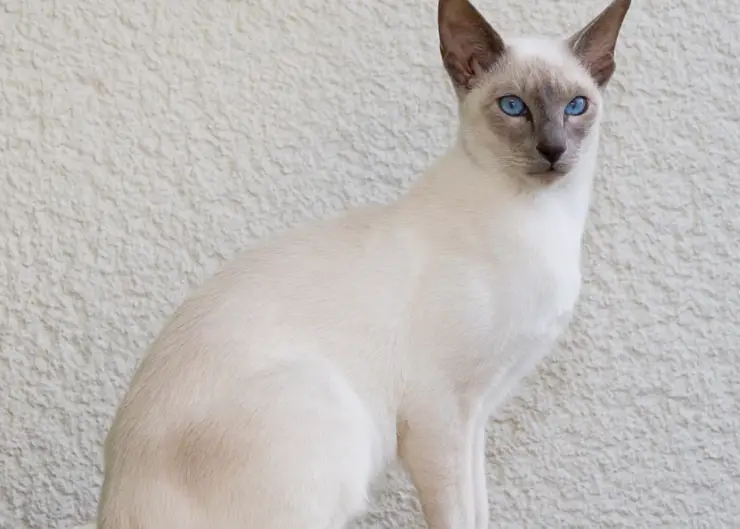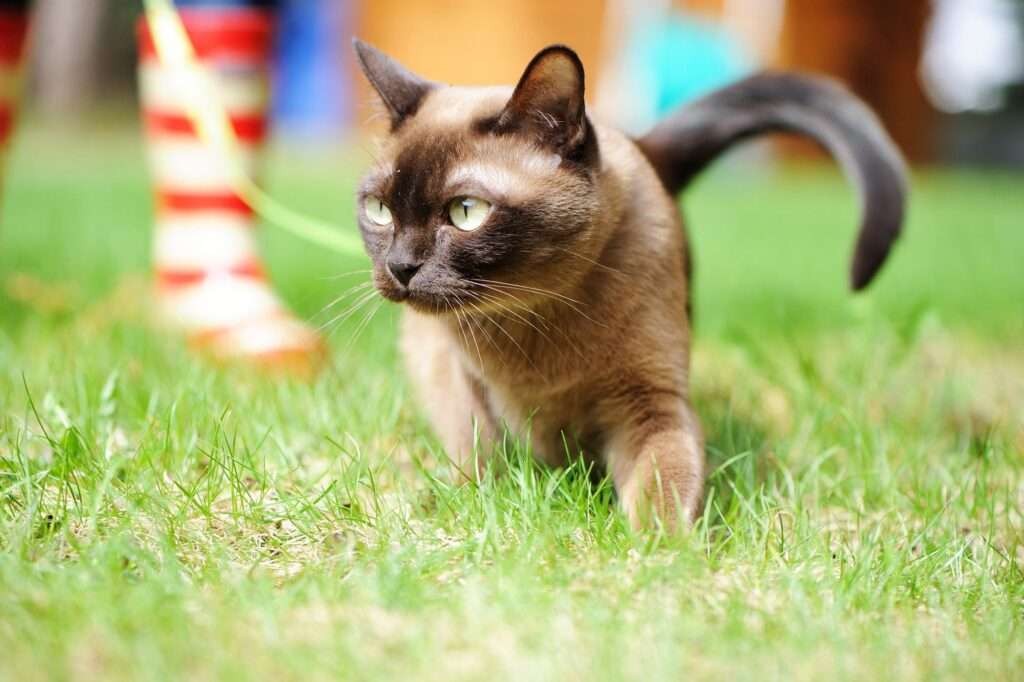
Description
Size: 5-10 lb
The Javanese have the same medium-sized, long, tubular body with developed muscles as the Siamese and Balinese. The breed has fine bones and tapering lines, and it is slender, graceful, and agile. Long and well-muscled, but with exquisite bone structure, are the legs. A little higher than the front legs are the back legs. The Javanese’s ears are described as “strikingly large” in the breed standard. The head is a long, tapering wedge, with the snout and ears creating a triangle. The medium-sized, almond-shaped eyes are consistently a vibrant, deep blue. The single, medium-length coat is close-lying, delicate, and silky.
Origin and History
The Balinese breed, which was created after breeders capitalized on a natural mutation for long hair in the Siamese in the 1950s, underwent some experimental introduction of new colors and patterns in the 1970s. The cats were ultimately classified as a different breed with a new name, despite efforts to have the CFA accept these “new-color Balinese” as a subset of the Balinese breed standard. The CFA awarded the breed championship status in 1986, and they are now known as “Javanese.” The breed was given its name from the nearby island of Java.
Before the two breed councils for the Javanese and Balinese eventually chose to merge the breeds under one standard, the Javanese was shown as a separate breed for more than 30 years. The Javanese are currently a subgroup of the Balinese.
Behavior
Activity Level: High
Social Needs: endlessly interested, intelligent and active
Like the majority of oriental cats, the Javanese is an energetic, talkative cat. They require cat trees and high perches as equipment. If these are not offered, the Javanese will use anything tall as her own personal perch since despite her slim build, she is a strong jumper.
As Pet

Exercise
Javanese people are vivacious and require a lot of action to remain content. Provide climbing surfaces for indoor cats, such as cat trees, perches, and tall scratchers, to help them get the activity they need. Use a variety of scratchers so your cat may use them appropriately and refrain from damaging your furnishings. Cats can scratch on surfaces that are vertical (such as cat trees or scratching posts), horizontal (such as cardboard or sisal scratchers), or a combination of both. Play as much as you can with your Javanese by giving him or her a variety of toys, such as feather boas or fishing poles, plush mice, balls, and interactive toys like puzzle toys.
Grooming
To get rid of loose hair, brush once a week with a soft slicker brush or a stainless steel comb. Shower when necessary or if your Javanese gets dirty. Weekly or every other week, trim the nails, and frequently inspect the inside of the ears for debris or redness. Using a cotton ball or square of gauze and a pet-safe ear cleaner (avoid using cotton swabs as they may unintentionally injure the ear drum) you can clean the ears. Make an appointment with your veterinarian if the ears on your Javanese cat seem red, inflamed, or extremely unclean, or if you witness your cat clawing at its ears.
Diet and Nutrition
The Javanese should be sporty and trim. Because most Javanese people have a natural tendency to be active, as long as they have enough playtime with you and lots of opportunity to run, climb, and play indoors, they usually get enough exercise to maintain a healthy weight. Keep an eye on your cat’s weight to ensure it maintains a lean physique, which can aid in preventing conditions like diabetes, heart disease, and arthritis. Give your Javanese cat measured portions of food at set mealtimes (twice daily for mature cats) rather than free feeding (leaving food out all the time). For advice on a nutritious food for your Javanese, consult your vet or breeder.
Table





